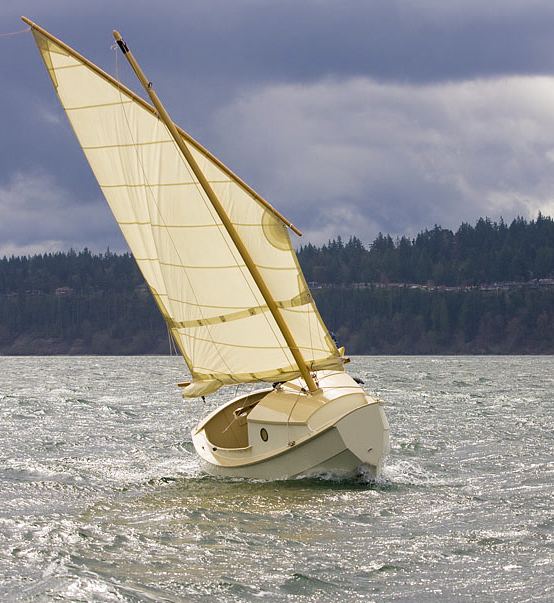Designer John Welsford Crew 2 | Design One-Design Draft 7 in (180 mm) up | |
 | ||
Construction Cold molded plywoodGRP with wood trim | ||
The SCAMP (acronym of Small Craft Advisor Magazine Project) is a wooden or fiberglass hulled Balanced Lug rigged sailing dinghy. The boat is 11 ft 11 in (3.63 m) long, and capable of accommodating four persons on a daysail or one to two for overnighting or extended cruising. Craig Wagner and Josh Colvin, editors of Small Craft Advisor Magazine, teamed up with noted New Zealand boat designer, John Welsford, to create what they call a "Mini Microcruiser" sailboat. Welsford considers it possibly the best boat he's designed, based on "suitability for purpose". Some early plans details received subsequent revisions by Kees Prins and the Northwest Maritime Center. While no particular feature of the boat is unprecedented, the combination of design elements has produced a "new genre of sailboat".
Contents
History
In the course of publishing Small Craft Advisor, Craig and Josh had sailed more than 70 small boats all the while compiling an informal list of favorite features and characteristics. Some of these ideas combined with Colvin's experience on a 150-mile cruise down the Columbia River—wishing he had a smaller, shallower boat for exploring that was still capable of coping with the River's sometimes challenging conditions—inspired the SCAMP concept. The emphasis was on "minimalism, efficiency and ease of use." In January 2010 they contacted John Welsford and started the design process. Building commenced at the Northwest Maritime Center in July 2010.
On 11/11/2011 SCAMP #1 was formally launched and test sailed on Port Townsend Bay in Puget Sound. Subsequent SCAMP sea trials and capsize testing was performed by Howard Rice.
Builder's plans were released for sale first, followed by CNC-cut kits. Gig Harbor Boat Works completed the first fiberglass production SCAMP in July 2013 and is currently the only manufacturer of fiberglass SCAMPs.
Design Elements
SCAMP Camps
In 2010 the Northwest school of Wooden Boat Building launched a series of twice-yearly SCAMP building workshops called SCAMP CAMPs. Hosted at the Northwest Maritime Center on the Port Townsend, WA waterfront, participants construct their own SCAMP from a CNC-cut kit to partial completion under the tutelage of professional boat building instructors including designer John Welsford and Howard Rice. The second in the SCAMP Camp series was held in the Great Lakes and was instructed by Howard Rice. Another SCAMP Camp was held in Port Townsend, WA on April 19–20, 2014. In 2015 there were Camps too.
One Design Class
In 2012 SCAMP established a one-design class with the United States Sailing Association. All SCAMP plans, kits, and fiberglass boats sold are issued an automatic class sail number from SCA. Sail numbers are recorded at the SCAMP Worldwide Registry. The class sail logo is a lantern with an "s" for the flame.
